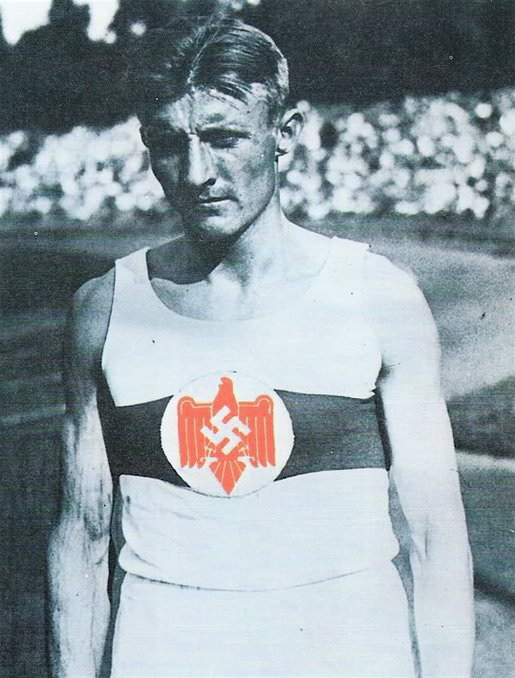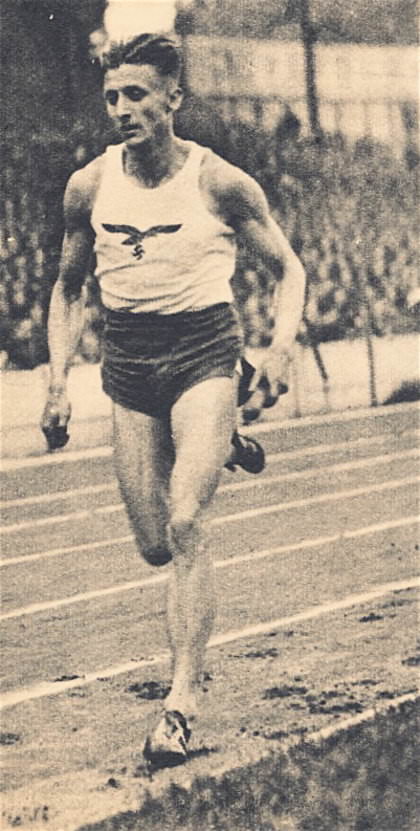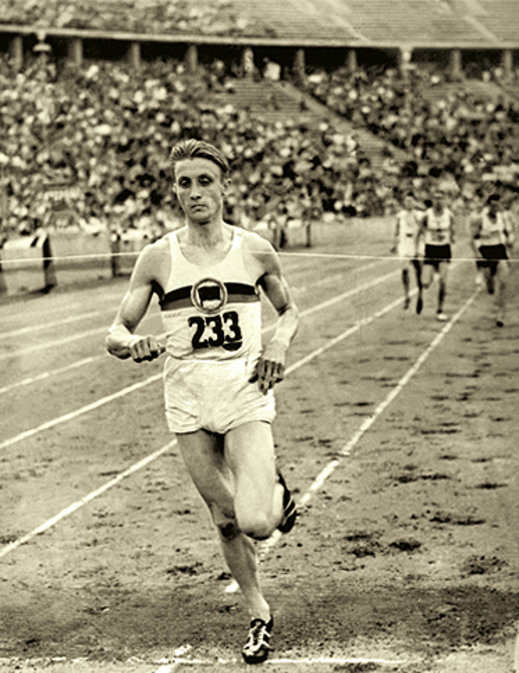PROFILE: RUDOLF HARBIG
1913-1944
 |
Remembered mainly for his 400 and 800 world records in 1939, Rudolf Harbig was also a great competitor who could produce his best performances on the big occasions. Noted for his strength of character, this German steelwright was an ascetic, abstaining from alcohol and even from tea and coffee. The Second World War denied him even faster times as well as Olympic gold medals. Although he was able to compete until the end of 1942—clearly he was useful to the Nazi propaganda machine—he was unable to match or improve on his pre-war times. Eventually, the double WR holder was sent to the Eastern Front, where he died in 1944 at the age of 30.
Harbig was 20 and a 2:04 800 runner when he was spotted by Woldemar Gerschler. Gerschler was in the early stages of his coaching career at this time. Within three months of the 1934 track season, Gerschler had helped the young Harbig improve to 1:58.2. Further improvement in 1935 (50.0 and 1:54.1) suggested the possibility of Harbig’s inclusion in the 1936 German Olympic team. And the 22-year-old Harbig rose to the challenge, running 48.8 and 1:52.2 before the Games. He was selected for the 4x400 and ran 47.6 to help his team to a bronze medal. He then went to Sweden for more competition over 1,000 (4th in 2:31.0) and 800 (6th in 1:55.3)
 |
| Harbig's fine running form. |
After this initial international experience, Harbig was unbeaten in 1937, posting best times of 1:50.9 and 47.6. His races included an international match against Great Britain in London, in which he won the 880 in 1:54.8. The next year he won the European 800 in Paris with a PB of 1:50.6 and earned another gold medal in the 4x400. He was unbeaten over 800 and also showed improvement over 400 with a national record of 46.8.
According to Fred Wilt’s How They Train, Harbig trained only three times a week in the winter: one long run between 1 1/2 hours and 3 hours with some speed variation; a gym session; and a floodlight track session. His winter track sessions between 1937 and 1939 included some sprints, a single run over 1,500 or 1,000, or 3x1200. But these sessions were extremely light even by 1950s standards and did not utilize more than three repetitions.
In the 1939 spring build-up to his WRs, Harbig ran sessions that used a little more interval training (IT). They were very still light. April 13: 3x200 in 23.8, 23.8, 24.3 [5 min. jog]; 10 min. jog; 600 in 1:25.3. April 23: 800 in 2:11; jog 15 min.; 800 in 2:02; jog 10 min.; 600 in 1:28. June 7: 2x300 in 38.2 [5 min. jog]; jog 10 min.; 500 in 71.0; jog 15 min.; 200 in 24.0. (Wilt, p.5)
Harbig’s big breakthrough came in 1939. After dipping under 1:50 for the first time in the German Championships (1:49.4, national record), he met his big Italian rival Mario Lanzi on the fast Milan 500-meter track on July 15. They went through 400 in 52.8 and 600 in 1:19.8. Harbig’s 27.8 last 200 gave him a stunning new WR of 1:46.6, which was 1.8 seconds faster than Sydney Wooderson’s current mark. This WR was to stand 16 years until 1955, when Roger Moens ran 1:45.9.
 |
| This picture shows how dominant Harbig was in the late 1930s. |
After this race, Harbig focused on the 400. Running again on a 500-meter track, this time in Frankfurt, he claimed his second WR with 46.0. This broke the 46.1 mark set by American Archie Williams in 1936. A few days before the start of WW2, Harbig ran the 400 in Cologne against Great Britain, again winning in 46.9.
Surprisingly, the war did not stop him competing over the next three years. He had 27 races in 1940, 26 races in 1941 and 19 races in 1942. He raced not only in Germany but also in Italy and neutral Sweden.
In 1940 he was still running fast times. In a match with Italy, he beat Lanzi in the good time of 1:47.8 and won the 400 in 47.0. Most of his 800s were in the low 1:50s. In 1941 he set a WR for 1,000 with 2:21.5 and was part of the German team that set a 4x800 WR. But he was beaten twice by Lanzi, although he ran 1:49.2 and 47.2.
He still ran reasonably well in 1942 with bests of 1:52.4 and 47.9. But he was beaten by B. Andersson over 800 in a match with Sweden. His last race was on October 9, 1942. 
2 Comments